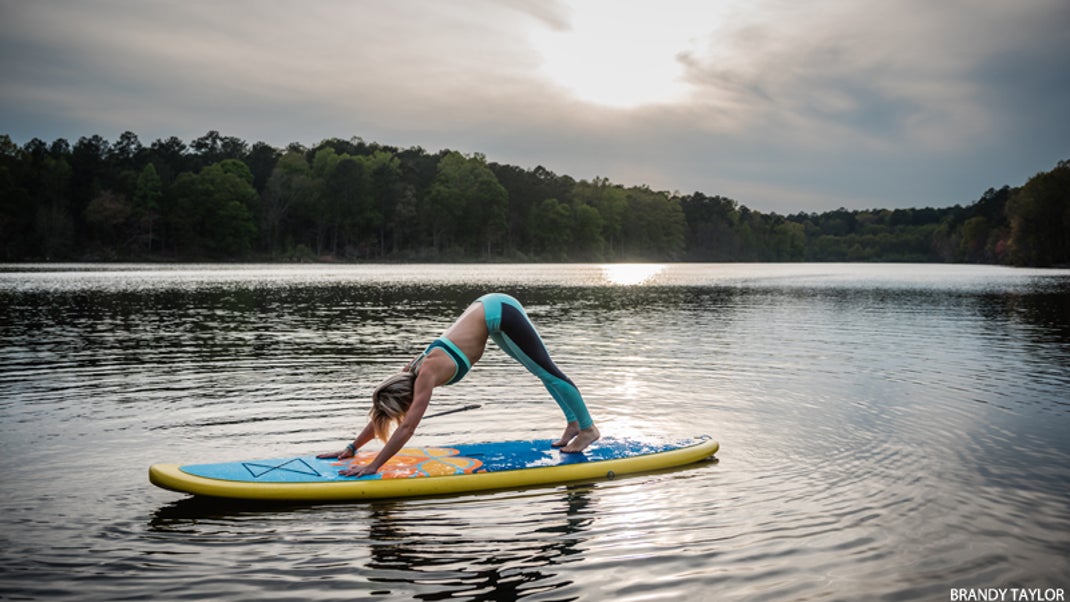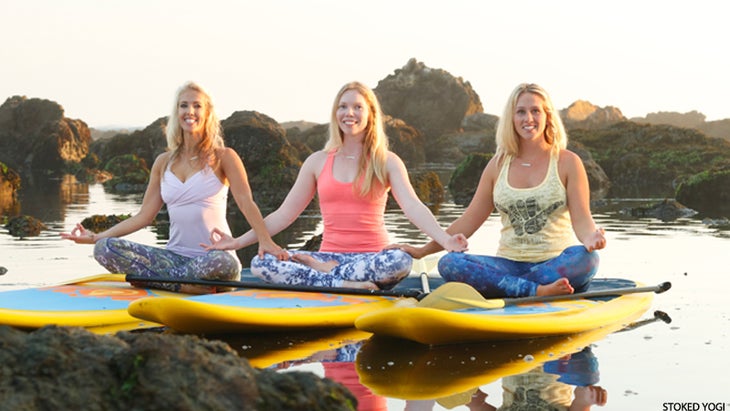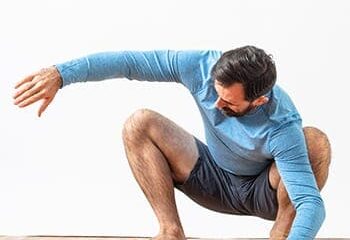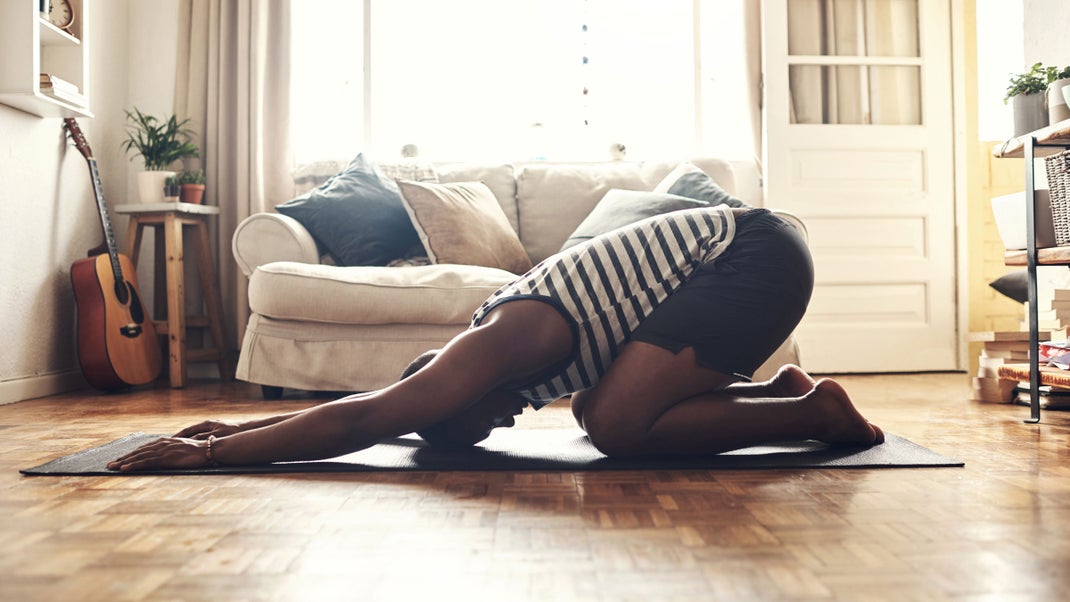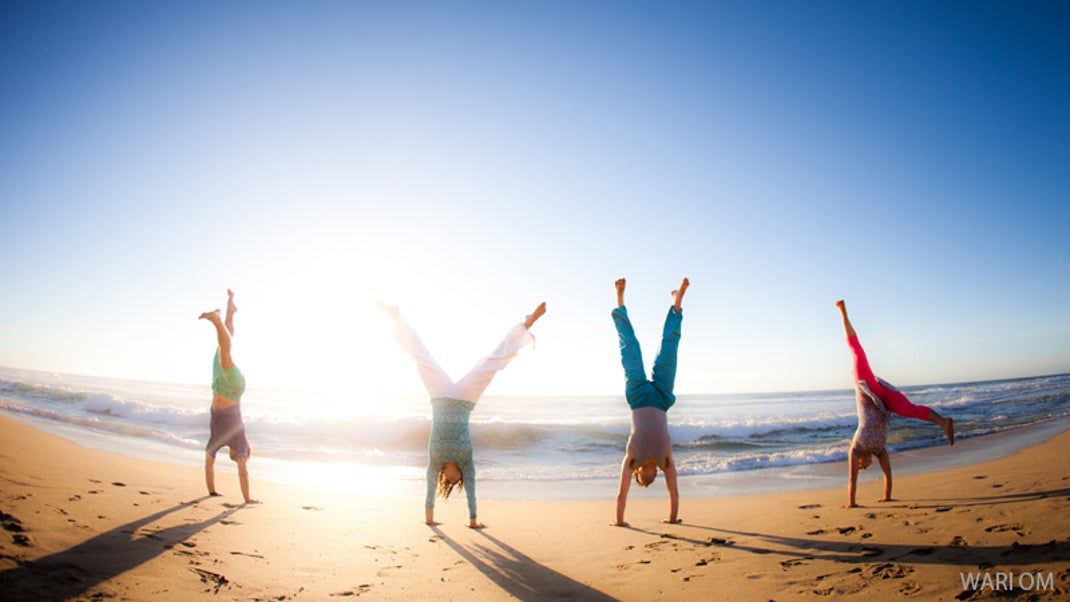This article will discuss 10 SUP Yoga Poses for Beginners. These poses are perfect for those who want to get started with yoga but do not know where to start. The following poses target the core and provide a balance of strengthening and relaxing your muscles. They also cover a wide variety of muscle groups which is great if you’re looking for an all-over workout!
Practicing yoga on the water can seem a little intimidating. After all, many of us find plenty of challenges balancing on land! But before you write off standup paddleboard (SUP) yoga as impossible, here’s what I tell all first-timers: “If you can breathe, you can do yoga. If you can stand on one foot, you can paddle.” Get your feet wet with these SUP poses.
Before You Get Started
Follow 3 general guidelines to help keep you stable and smiling on the water.
Slow down. Move at about half the speed you would on land, and make an effort to follow the length of slow, even breaths.
Mind your mat. The paddleboard’s handle (inset at the top of the board) is usually the center of its balance, so try to orient yourself around the handle at all times.
Gaze at the horizon. Loss of balance usually comes from shifting the gaze too quickly. Keep your eyes on a fixed point on land for added stability.
Easy Seated Pose
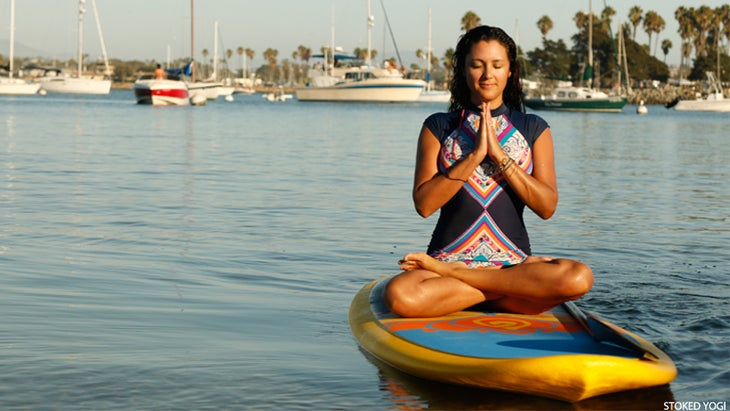
Facing the front of your board, sit with your hips on the handle and let your hands rest gently on your knees. Sit up tall and take deep abdominal breaths, noticing the subtle rocking of the water beneath you.
Child’s Pose
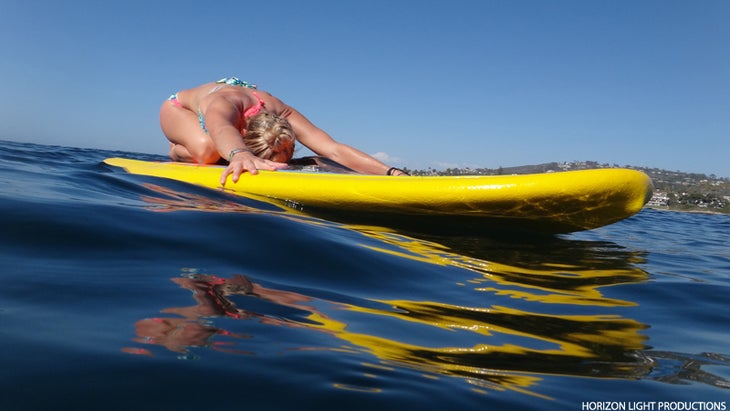
Start in Table Top with your navel above the board’s handle, widen your knees and bring your big toes to touch. Sink your hips back onto your heels and rest your forehead on the board. Arms can extend long in front of you, or your hands can drape over the sides of the board with your fingers trailing the water.
Downward-Facing Dog
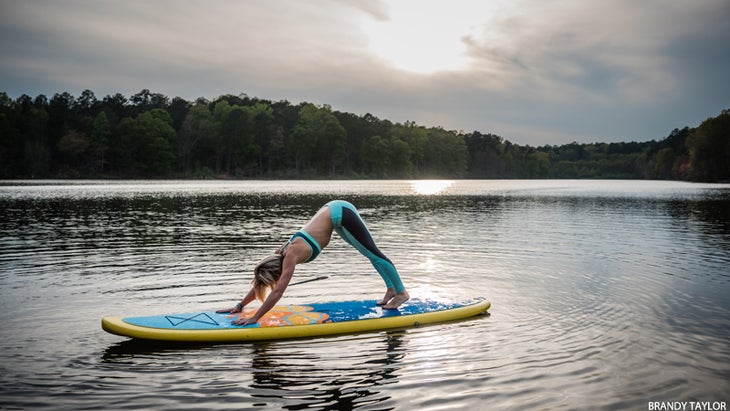
From Table Top, slowly send your hips up and back, straightening the legs. Gaze at the horizon behind you. Take a few breaths and use organic movements to settle into the pose. Be sure to press strongly into the index finger and thumb to protect your wrists.
Plank
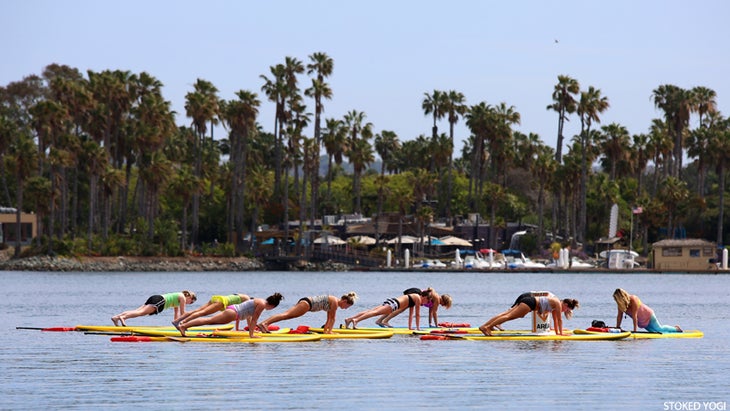
From Down Dog, shift forward and stack your shoulders above your wrists. Create a long line from the crown of your head to your heels. Engage the low belly. Add heat by lifting one leg at a time. For a little less challenge, drop your knees.
Cobra or Upward-Facing Dog
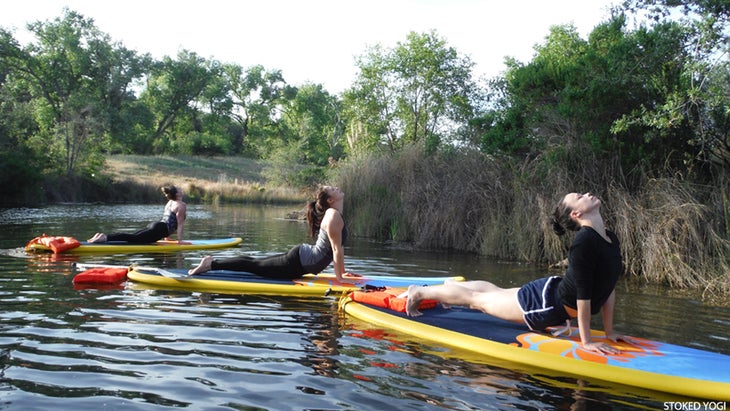
For Cobra, lie prone, placing your belly on the handle, hands beneath shoulders and draw elbows toward each other. Inhale and lift your head, shoulders, and chest.
For Upward-Facing Dog, place your hands further back, near the ribs. Before pressing your hands into the board to lift your torso. Engage the quads so, if possible, your knees lift away from the board.
Low Lunge Variations
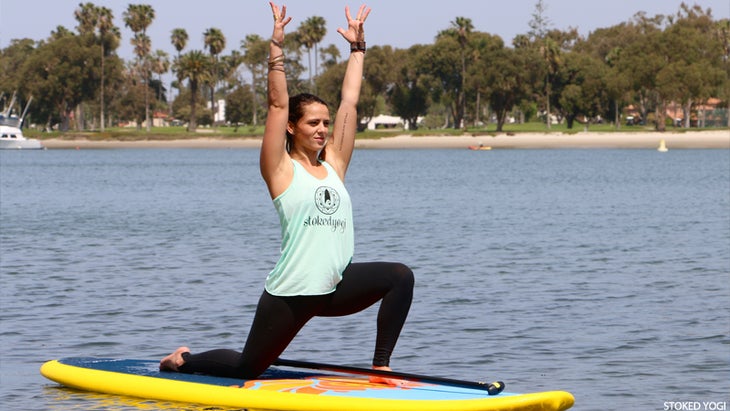
From Table Top or Down Dog with your hips over the handle, bring your right foot forward so your hands frame your foot. Look to the horizon for balance before walking your hands onto the knee or thigh.
Once you feel stable, explore arm variations like reaching both arms to the sky or adding a twist by planting your left palm on the board and lifting your right arm toward the sky. Switch sides.
Wide Leg Standing Forward Fold
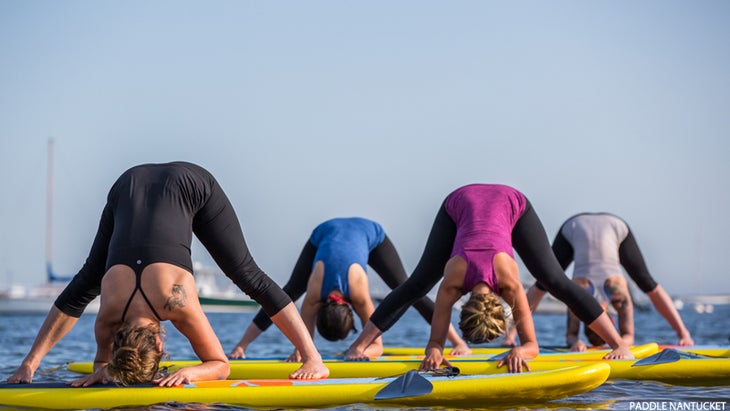
From Low Lunge, place both hands inside the front knee and walk to the rail (side of the board). Apply even pressure with your hands as your rotate onto the ball mounds of both feet, then lower heels toward the opposite rail. Hands and feet should be the same distance apart that you would have them on land: hands beneath shoulders, legs wider than hip-distance with toes slightly turned in.
Modified or Half Camel
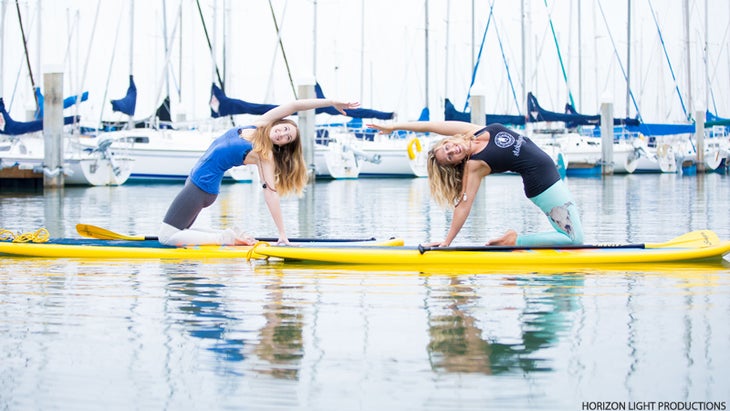
Kneeling around the handle of the board, support the low back with your hands before moving into Camel. The instability of the water can create more challenges, so start with your toes tucked, or explore a gentler kneeling backbend by placing one hand behind you, lifting the hips, and sweeping the opposite arm overhead. Switch sides.
Sleeping Pigeon
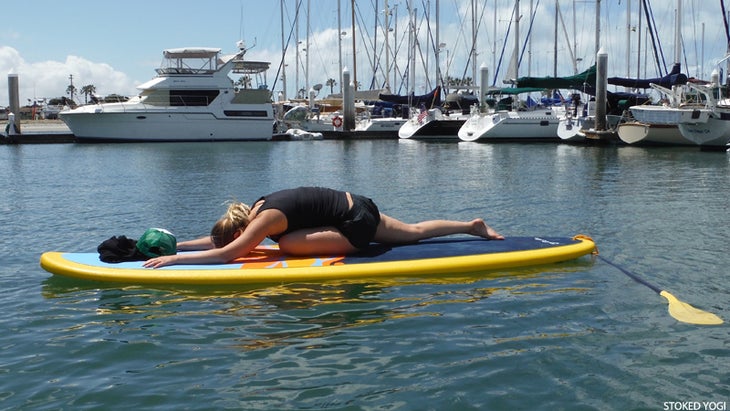
There is something so soothing about Sleeping Pigeon on the water. Make sure your groin is over the handle of the board. If you need a bolster, try using your life jacket (conditions permitting). Relax into the pose and listen to the sound of the waves as they lap at your board.
Bridge Pose
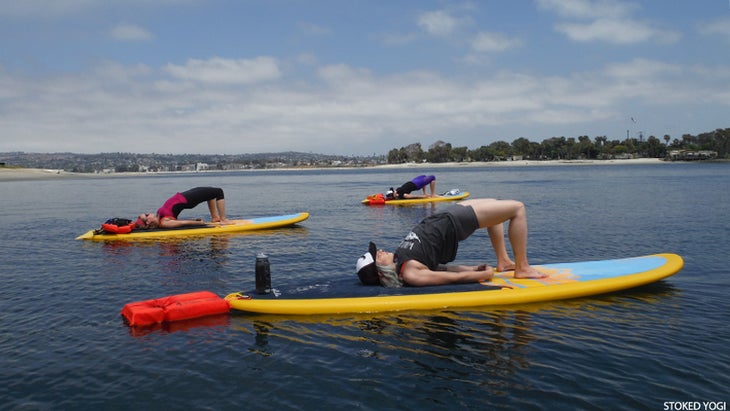
Start on your back with your sacrum over the handle, knees bent and soles of your feet on the board so that your fingertips can graze your heels. Keep your feet slightly wider than hip distance apart. Lift your hips toward the sky and bind your arms beneath to find more height. For an added challenge, try lifting one leg at a time.
Savasana
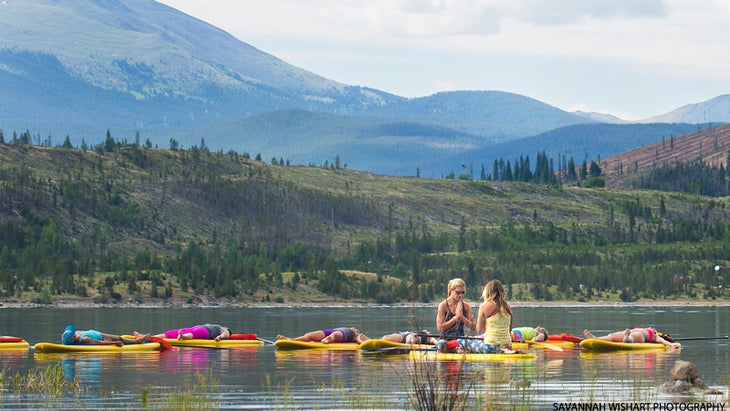
Don’t forget about this one! There’s nothing as serene as relaxing with the sun kissing your face and the water rocking you into a blissful state.
There’s a lot more to learn, and a guided experience is a great way to go deeper into the practice of aqua asana. (I’ll be leading a one-day retreat at YJ LIVE! San Diego on Monday, June 27.)
More from Amelia Travis
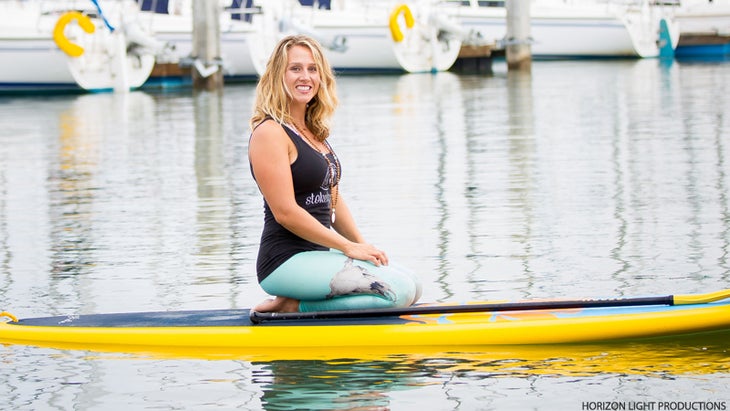
Stoked Yogi founder Amelia Travis is a Yoga Alliance-registered RYT-500 and American Red Cross-certified lifeguard. Trained in classical yoga in the Sivananda and Ashtanga vinyasa traditions, she has a strong foundation in anatomy and philosophy and skillfully weaves knowledge of both into her classes, retreats, and teacher training. Amelia has trained over 165 yoga instructors how to adapt the practice of yoga safely to the standup paddleboard.
She has a teaching style of clear and concise anatomy-based cueing, interwoven with the wisdom of Vedic philosophy and a spirit of devotion. After breaking her back in a surfing accident in 2012, Amelia realized that life is too short to do anything but what you love. She lives each day now by the Stoked Yogi mantra: Set your intention, then breathe it to life.
Conclusion:
There’s a lot more to learn about SUP yoga, and a guided experience is a great way to go deeper into the practice of aqua asana.
If you’re interested in learning more, check out Amelia Travis’ upcoming one-day retreat at YJ LIVE! San Diego on Monday, June 27.
Stoked Yogi founder Amelia Travis is a Yoga Alliance-registered RYT-500 and American Red Cross-certified lifeguard with over 165 yoga instructors trained in adapting the practice of yoga safely to the standup paddleboard.

